Visiting Kenya is always special for me as some of my earliest memories of the continent were in this stunning country. This trip was a good chance to revisit areas, refresh my knowledge and to also explore a couple of destinations for the first time.
I arrived into Nairobi’s Jomo Kenyatta International Airport on the daylight British Airways flight. I decided to not use our meet and greet service on arrival, to see how long standard waiting times and formalities took without the assistance of Tradewinds. I will continue to recommend being fast tracked through immigration – the benefits are definitely worth it!
Once through the airport, I was met by the friendly faces of Stan and Edwin of Benroso Safaris before spending the night at the Palacina Hotel.
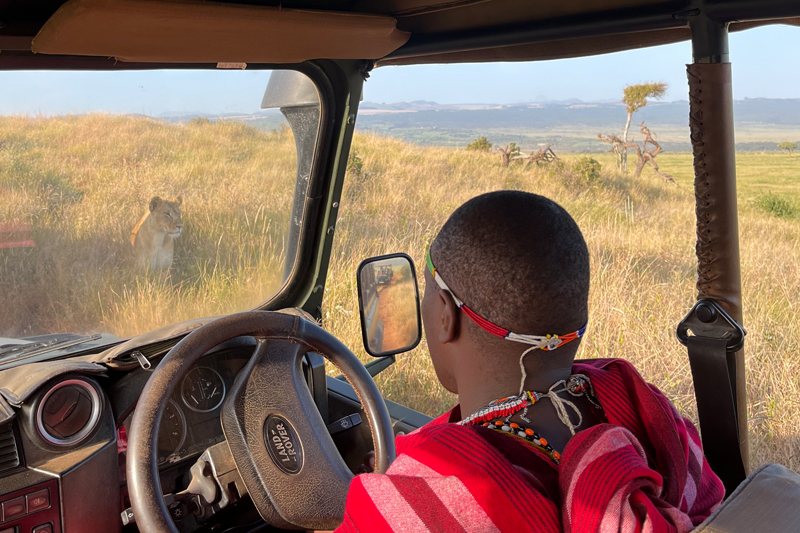


HOMESTEAD STYLE HOSPITALITY
My first stop was the Laikipia plateau of central Kenya, revisiting the wildlife conservancies of Lewa and Ol Pejeta. Lewa was my first stop and I spent two nights on the conservancy at Lewa Wilderness and Sirikoi. Both are fantastic owner run properties on separate sides of the conservancy. This ‘homestead’ style experience is very Kenyan and not really replicated elsewhere in Africa.


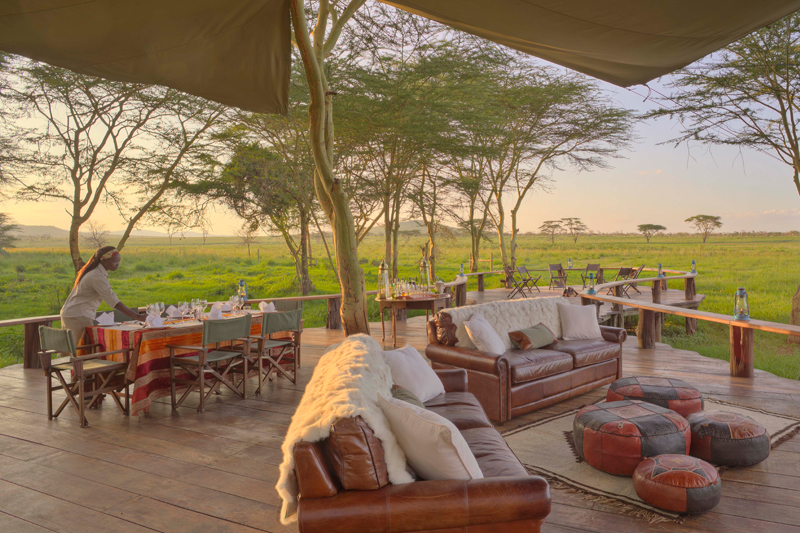
Sirikoi has a similar feel to Lewa Wilderness but slightly ‘posher’ with added sophistication. The story behind the camp is fascinating with Sue Roberts on hand to explain how they came to establish themselves on Lewa and the hard work her late husband Willie did for conservation across Kenya. Activities are largely the same at both lodges, so choosing between the two comes down to personal preference on style and feel of the two properties.
I also visited the other lodges on the conservancy such as Lewa House (another wonderful owner run option) and then both Elewana’s Kifaru House and Lewa Safari Camp.


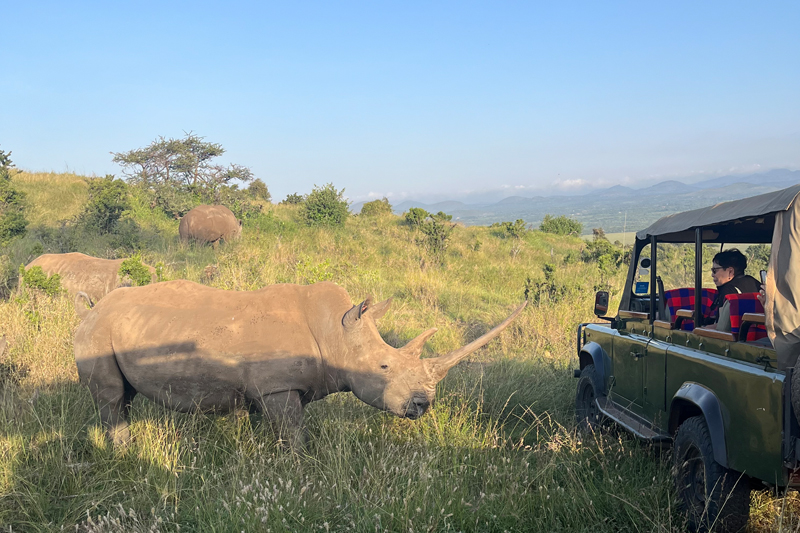
THE BEST PLACE IN EAST AFRICA TO SEE RHINO
Lewa is a stunning conservancy with rolling hills, vast open plains, swamp wetlands and forest too. The variety offered means birdlife is exceptional, but also the mammal species too. Cat viewing is good on the conservancy, but a key reason to visit is to see the endemic species such as reticulated giraffe, Grevy’s zebra and Jackson’s hartebeest. In addition Lewa has incredible numbers of both black and white rhino making it one of the best areas to see them in East Africa.
HANDS ON CONSERVATION ACTIVITIES
Ol Pejeta is roughly a two hour drive southwest of Lewa and is another conservation success story. Wildlife viewing is excellent and similar to Lewa, the conservancy is best known for its rhino population (black and white). Reticulated giraffe can also be seen as well as Jackson’s hartebeest, but due to the success of the lion population Grevy’s zebra are few and far between.
Ol Pejeta is not as scenically beautiful as Lewa, but still adds wonderful variety to a safari with Mt Kenya as a backdrop and is home to some tented camps which offer really good value. Getting involved in conservation activities are worth experiencing here – there is the chance to visit the last two northern white rhino in the world as well as meet the rangers and their anti-poaching dogs with a hands on interactive demonstration!
From Ol Pejeta I flew direct to the open plains of the Masai Mara, spending three nights split across the Olare Motorogi and Naboisho conservancies.
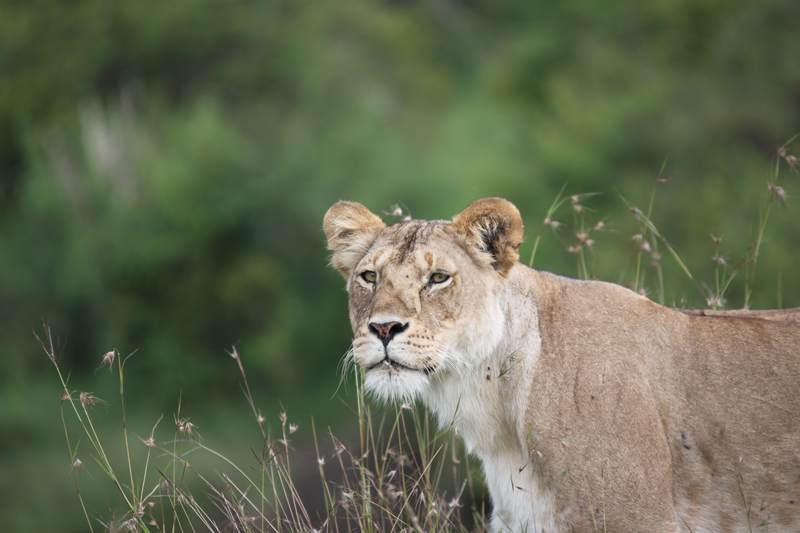
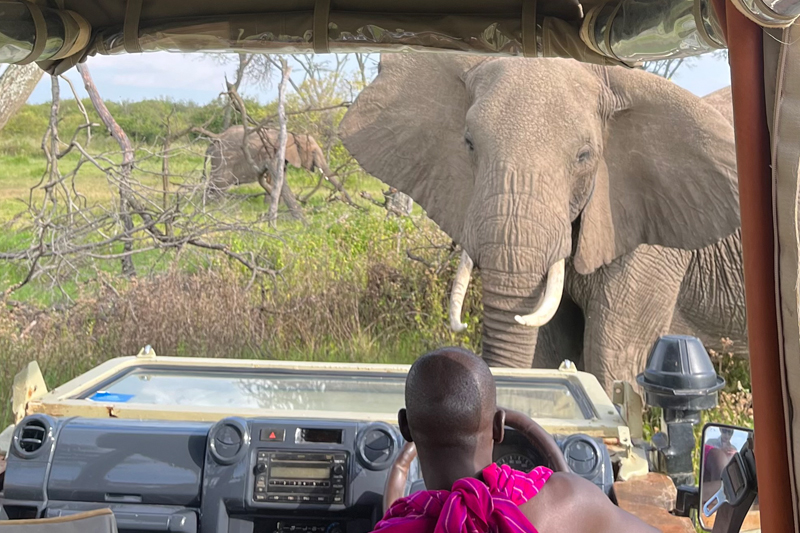

ENJOY THE MARA WITHOUT THE TOURISTS
The Mara is all about the big cats and is arguably THE premier destination in Africa for game viewing. The Mara has negative connotations for hordes of tourists and the high impact that has on the wildlife. However, as many of you know, we generally suggest the private community conservancies on the northern boundary of the National Reserve. They offer a far more exclusive game viewing experience with fewer camps, fewer vehicles (a maximum of five per sighting), the ability to drive off road and enjoy night drives – all this with wildlife viewing that matches the National Reserve as there are no fences to separate the reserve and the conservancies. You can enjoy the incredible Masai Mara, without the people!
The Mara (and Kenya generally) has received a lot of rain since the turn of the year. I was travelling in June which is just after the long rainy season which traditionally ends in mid/late May and the Mara was looking stunning with lush green vegetation. With the rain comes higher grass which of course makes game viewing a little trickier, especially for cats. However, a testament to how good the cat viewing is in the Mara, lion sightings were still superb.


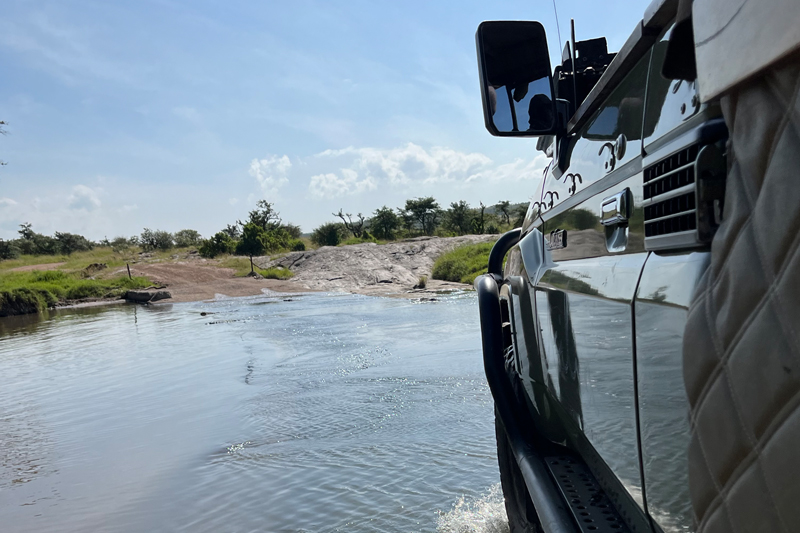
SUPERB BIG CAT SIGHTINGS
My first afternoon’s game drive was largely spent watching interactions between the Tiki Tiki pride on the Olare Motorogi Conservancy. Watching the sub adults copying their parents and training for the hunt was wonderful to see. Subsequent drives both on the Olare Motorogi and Naboisho conservancies kept delivering lions.
Interestingly Naboisho was offering slightly better viewing than Olare Motorogi and this was down to the way they manage the Maasai cattle from the nearby communities. As mentioned above, the grass was very high but with well regulated, rotational grazing on the conservancy it has kept the grass shorter. This in turn attracts plains game (zebra, topi, impala, Thompson gazelles etc.) as they prefer to eat shorter grass and feel safer in the open. Where the game is, the cats follow which has meant Naboisho has really benefitted!
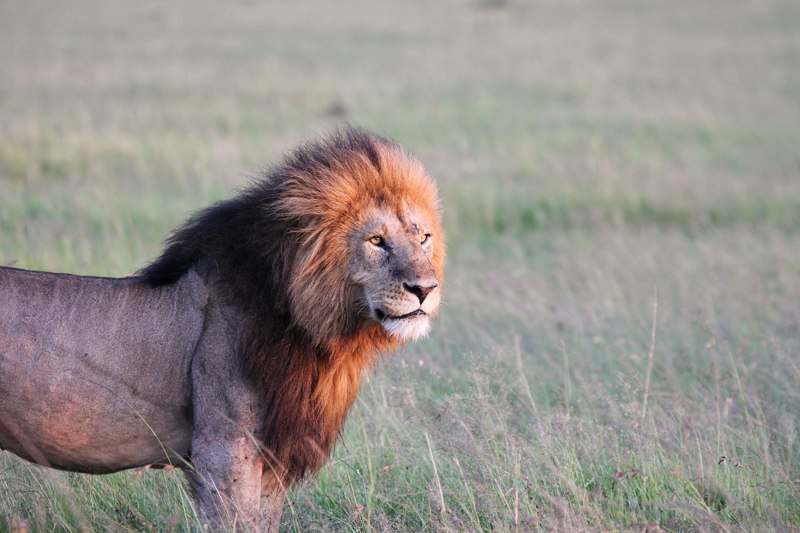

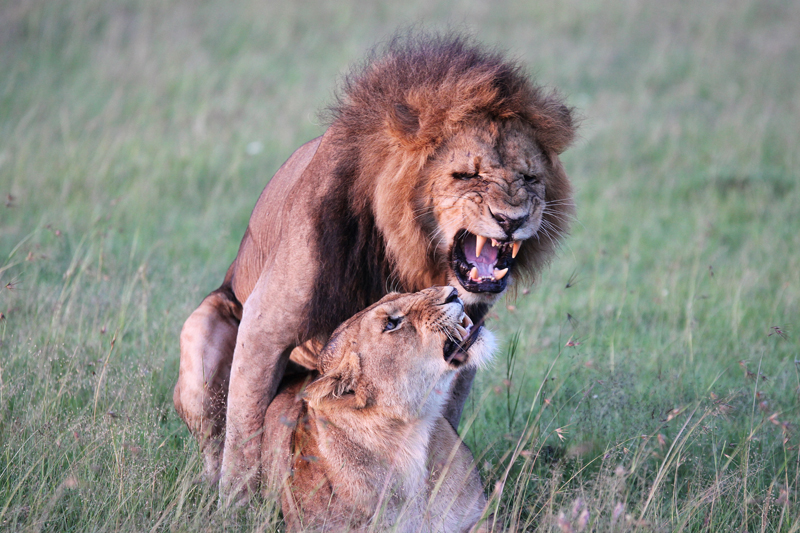
ELEPHANTS IN FRONT OF KILIMANJARO
After spending the night in Nairobi due to flight logistics I headed down to Amboseli National Park. Amboseli is in the shadows of Mt Kilimanjaro and is synonymous for its elephant population. They come to feed in the lush swamps that are filled by ice and snow melt from the mountain. Elephants can be seen in good numbers all year round, but as with much of Africa you tend to see higher numbers when it is drier with September/October being the best time of year to visit.


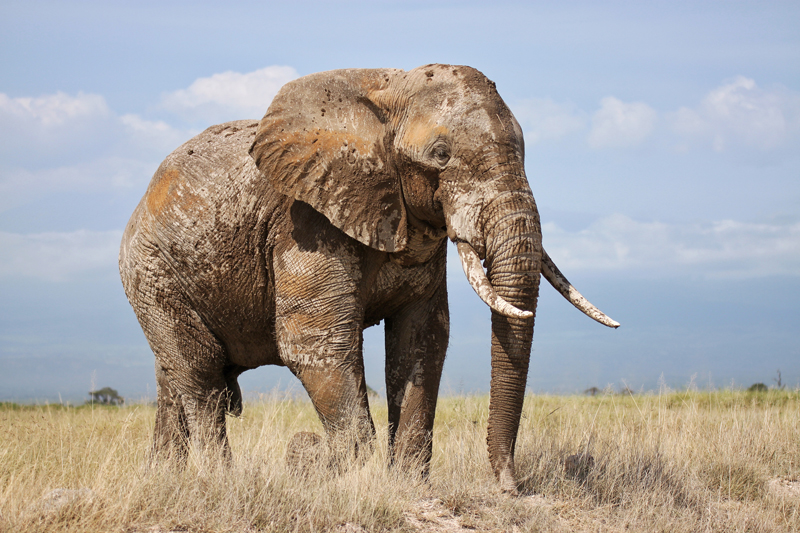
UP CLOSE AND PERSONAL WITH BIG TUSKER ELEPHANTS
I spent the night at Elephant Garden Camp which is owned and run by guide and honorary Amboseli warden Eric Ole Kalama. The camp is simple, comfortable and located outside the Kimana gate. The southern part of Amboseli is home to more lodges (and some large ones too) so as a result does tend to be busier with vehicles. A key advantage of Elephant Garden Camp is Eric – his knowledge, passion and contacts mean it can be possible to get off road permits (if you’re a photographer) which can give you opportunities to get some incredible photographs of the big tuskers that Amboseli is so well known for.
Another option for keeping to the quieter areas of Amboseli is to choose somewhere like Elewana Tortilis Camp which is located on the 40,000 acre Kitara conservancy. The camp varies their activities between the busier National Reserve and the conservancy where they can enjoy night drives, off road driving and walks too.



GIN AND TONICS, LION, LEOPARD AND CARACAL AT THE WATERHOLE
After my short stay in Amboseli I made my way east via Angama Amboseli to the Chyulu Hills and Great Plains ol Donyo Lodge. It was such a wonderful area with a mix of terrain from open plains, wooded hills and lava flows. Due to the porous nature of the volcanic rock, there are no surface rivers in the Chyulu Hills. As a result, ol Donyo Lodge’s waterhole becomes a hive of activity throughout the day, frequented by huge bull elephants, giraffe and zebra as well as lion, leopard, caracal and striped hyena. The lodge’s underground hide at the waterhole is a wonderful place to spend time and clients will regularly forgo an afternoon activity to sit in the hide with a gin and tonic while observing the interactions between the wildlife that comes to drink. Back here at Africa House in Suffolk, we love to get our ‘Africa fix’ by viewing the waterhole’s livestream. Michele recently stayed at Ol Donyo Lodge and you can read about her experiences here.
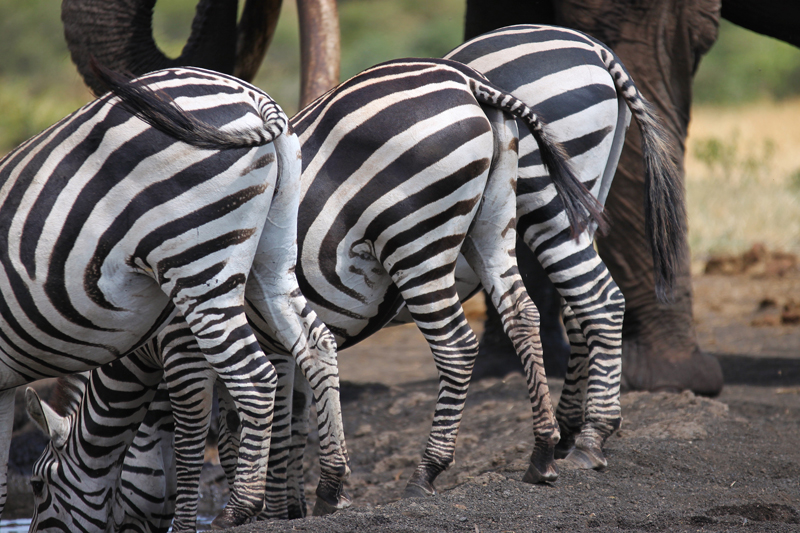
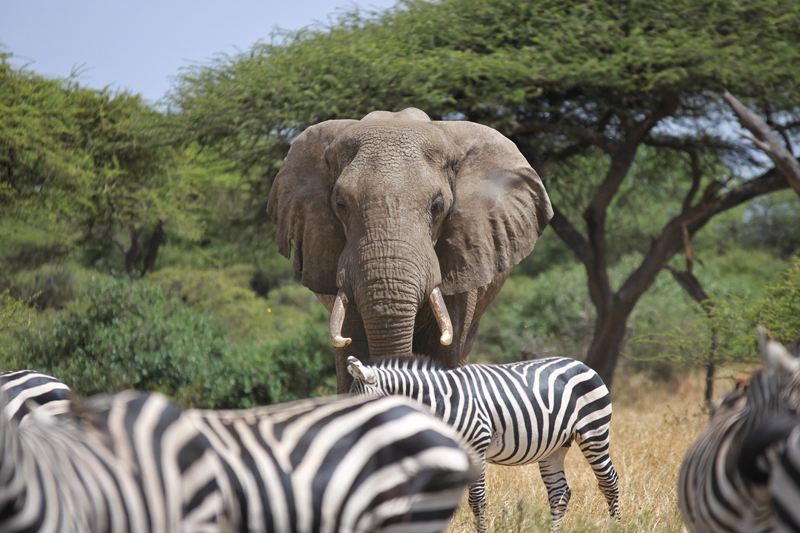
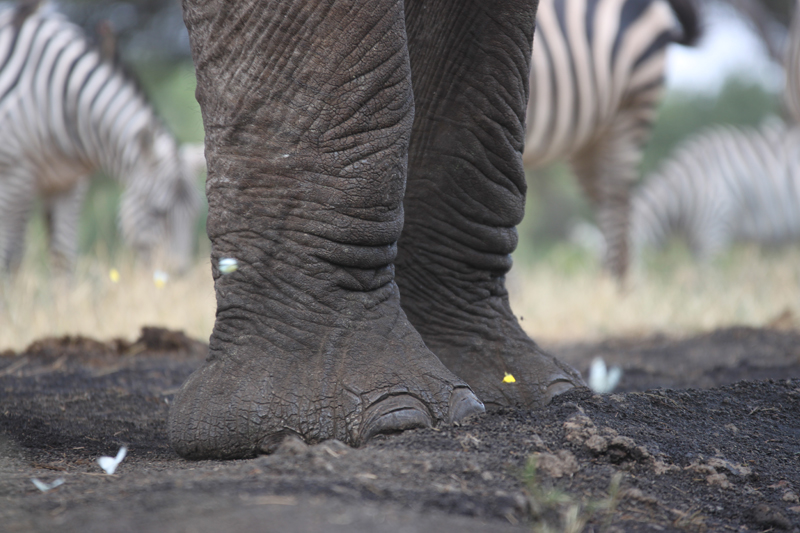
LAKES AND FLAMINGOS
My final stop included the Rift Valley lakes of Naivasha and Nakuru. This is an area of Kenya that we used to send clients to 15 or so years ago, but as human populations surrounding the lakes have grown in recent times the wildlife and safari experience has suffered somewhat. However, in some instances spending time on Lake Naivasha for the excellent birdlife and variety of landscape can make for a unique addition to a safari. A Kenya safari doesn’t generally include time by a large body of water and there is always something special about waking up and eating breakfast with fish eagles soaring above. Wildlife viewing is more limited, but a stay in the area isn’t just about the wildlife – boat cruises, visits to flower farms, walks, sundowner drives and visits to other lakes further north combine to make an interesting experience. Lake Elmentaita is home to greater and lesser flamingos, which are best seen from July to October.
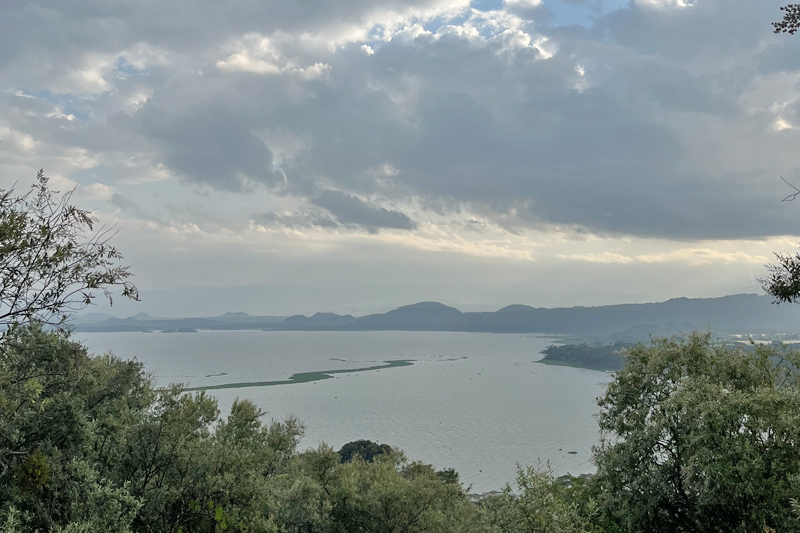


Further north is Lake Nakuru, which is a big game destination and home to rhino as well as cats. Being a national park, it is a little restrictive with a small road network, so should be considered as part of a larger safari, and really only if exploring Kenya by road (rather than by air).
Something I took away from this trip was how busy Kenya was in June. Historically, June has always been a little early in the season to be considered as a prime travelling period as the migration herds don’t arrive in the Masai Mara until mid-July onwards. The resident game in Kenya, however, is excellent all year round and it seems that people are catching on and making the most of better value rates.
Joe stayed at: The Palacina, Lewa Wilderness, Sirikoi, Ol Pejeta Bush Camp, Mahali Mzuri, Naboisho Camp, Leopard Hill, Hemingways Eden, Elephant Garden Camp, ol Donyo and Loldia House.
Joe visited: Lewa House, Elewana Kifaru House, Lewa Safari Camp, Kicheche Laikipia, Ol Pejeta Safari Cottages, The River Camp, Sanctuary Tambarare, Kicheche Bush Olare, Mara Expedition Camp, Mara Toto Camp, Mara Nyika Camp, Encounter Mara, Kicheche Valley Naboisho, Hemingways Ol Seki Mara, Basecamp Wilderness, Saruni Eagle View, Villa Rosa Kempinski, Manzili House, House of Waine, Elewana Tortilis Camp, Tawi Lodge, Angama Amboseli and Chui Lodge.

